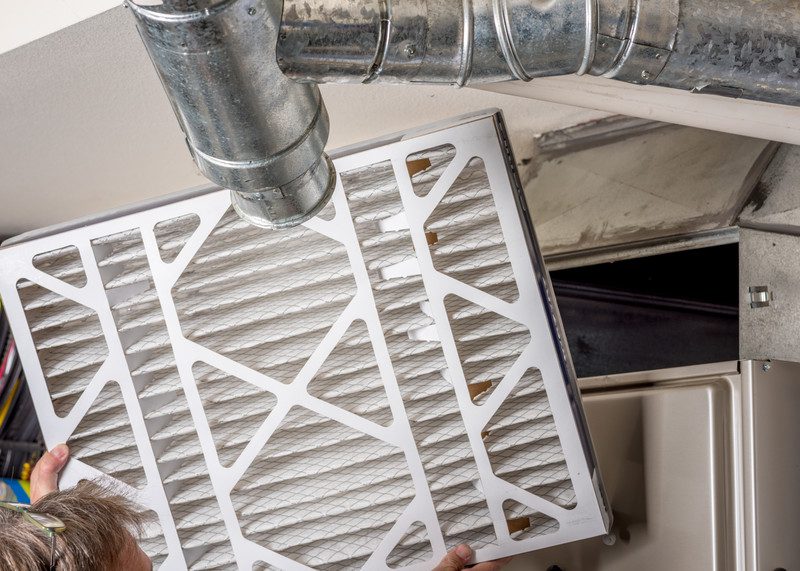Your AC Will Need Spring Maintenance Soon, both Pro and DIY

With winter winding down in southwest Ohio, it’s not too early to start thinking about steps you’ll want to take to prep your air conditioning system for the spring. A mixture of easy do-it-yourself steps and a comprehensive maintenance check by your trusted HVAC professional are just the ticket for preparing your AC or heat pump for the lengthy cooling season.
First off, DIY steps you can take to get our AC ready for spring:
Some Maintenance You Can Do Yourself
• The first one is obvious. Once it starts warming up outside, remove any cover that you’ve placed on your AC or heat pump’s outside compressor unit during the winter.
• Unless you’ve done it recently, replace the air filter in the inside unit of your AC or heat pump. If you’re like many homeowners, your furnace blower serves as the blower for your air conditioning system, and likely collected ample dust and debris over the long winter months. Likewise, if you used a heat pump for winter heating, its filter could be clogged as well. A dirty air filter will force the AC or heat pump blower to work overtime to push air through the system, which stresses the equipment, wastes energy and may reduce cooling efficiency. Remember to inspect the air filter every month, replacing it as needed.
• Inspect the area around the AC’s outside unit to make sure there’s no vegetation, clutter or other objects restricting the clear flow of air into and out of the condenser/compressor unit. If there’s any issue with the outside unit releasing heat into the surrounding environment, this will compromise the work your HVAC system is doing.
• Similarly, it’s important to have a clear path for conditioned air blowing from supply registers, and back into return registers. It’s not unusual for rugs, drapes, furniture, toys and other household items to inadvertently get shoved overtop registers. This will force your system to work harder than necessary to cool your home, and may compromise air conditioning in that particular room.
• Air leaks may have developed in the outer perimeter of your home over the winter, or may have been there in the first place. During hot weather, this means your cooling system has to work harder and longer to satisfy the setting on the thermostat. Common areas for air leaks are where building materials meet (such as foundation and drywall), where utilities penetrate exterior walls in the home, such as exhaust pipes, plumbing and electrical conduits, and around windows and doors. Depending on the type of leak, use caulk, weatherstripping or spray foam to seal the leaks and make your home as airtight as possible. One way to find air leaks is to patrol the interior side of your outer perimeter with a lighted candle or smoke pencil, watching for places where the flame or smoke wavers from air movement.
Now that you’ve done your part to prepare your home for the warm spring and summer weather, it’s time to call in your trusted HVAC professional to complete a spring maintenance tune-up on your cooling system. Or perhaps you already have a maintenance agreement with a local HVAC business, in which case they’ll likely call to arrange your annual maintenance visit.
(Most of the above suggestions apply equally in the months before the heating season, since similar issues can compromise both cooling and heating performance and efficiency.)
Professional Spring AC Maintenance Visit
The HVAC technician who comes to your home likely will perform the following tasks:
• If necessary, they’ll clean the coils in your AC or heat pump (both inside and outside). Dirt and dust can coat the outside condensing coil, while the inside evaporator coil is an inviting hideout for mold and bacteria. Either way, a dirty coil can impair the heat-exchange process that’s at the heart of air conditioning technology.
• They’ll clean and lubricate moving parts in components such as the blower or air handler motor, compressor and capacitor, and inspect that equipment to make sure it’s not verging on failure.
• They’ll check electrical connections, tightening those connections or cleaning terminals as needed.
• They’ll check the refrigerant level to make sure it meets manufacturer guidelines. If the level is low, they’ll check for any leaks, and then fill it to the correct level (after addressing any defects). A low level of refrigerant often signifies a leak, since in this closed system refrigerant has nowhere else to go.
• Check airflow in the cooling system and adjust if necessary
• Inspect the condensate pan and drain for your AC or heat pump. Over time, foreign materials such as dust may block the condensate line, causing a costly backup of water into your home.
• In some spring maintenance checks, the technician also will inspect ductwork for any leaks or other defects.
• The technician should check the thermostat for proper operation and calibration. If you have an old-school manual thermostat, they may suggest that you upgrade to a modern programmable model. The resulting energy savings you obtain from programming temperature adjustments to fit your daily schedule will more than pay for that upgrade, in relatively short order.
Maintenance for Efficiency, Performance and Safety
One of the main accomplishments of a comprehensive spring maintenance for your AC (and fall maintenance for your heating system) is to catch small problems before they evolve into big problems and a broken AC. A malfunctioning air conditioner that’s still working at some level is likely to waste energy and cost you money, perform its core job – cooling your home in a balanced fashion – in a poor manner, and even compromise indoor air quality.
